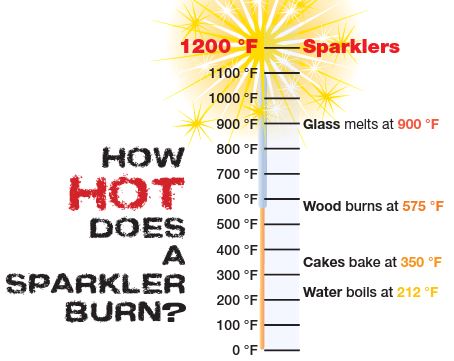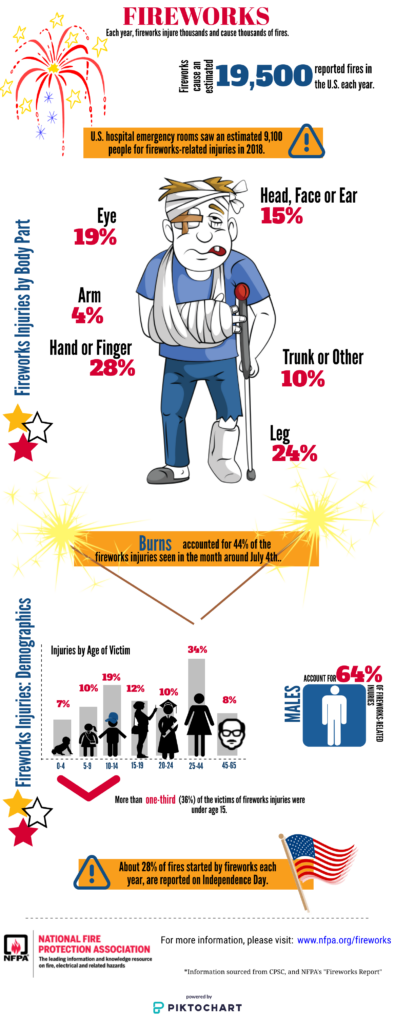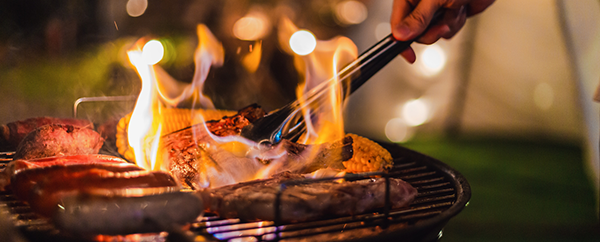Prevent these summer fires
Independence Day is right around the corner, so today we’re reminding you of summer fire prevention tips to keep in mind for your summer fun – particularly, fires caused by grilling outdoors and fireworks.
There’s nothing better than the smell of food on the grill in the summertime. Fully 70 percent of adults in the U.S. have a grill or smoker, which translates to a lot of tasty meals. But it also means there’s an increased risk of home fires.
Gas grills are involved in more than 9,000 home fires per year, including 4,454 structure fires and 4,625 outdoor fires annually. Leaks or breaks are primarily a problem with gas grills. Charcoal or other solid-fueled grills are involved in 1,440 home fires per year, including 754 structure fires and 686 outside fires annually.
In 2017-2021 (latest figures available), U.S. fire departments responded to an average of 11,421 home fires involving grills, hibachis or barbecues per year, including an average of 5,763 structure fires and 5,659 outside or unclassified fires. July is the peak month for grill fires, followed by June, May and August.
During that same time period, an average of 22,155 patients per year went to emergency rooms because of injuries involving grills. Nearly half of the injuries were thermal burns, including both burns from fire and from contact with hot objects; 6,074 thermal burns, per year, were caused by such contact or other non-fire events.
Children under five accounted for an average 2,820 – again, nearly half – of the contact-type burns, per year. These burns typically occurred when someone, often a child, bumped into, touched or fell on the grill, grill part or hot coals. Keep your children away from the grill.
Related: Top summer homeowners claims and how to prevent them
Now that we’ve introduced these sobering statistics, here are summer fire prevention tips for outdoor grilling from the NFPA (National Fire Protection Association).
Summer fire prevention tips for outdoor grilling
Propane grills
- Check the gas tank hose for leaks before using it for the first time each year.
- Here’s how: Apply a light soap and water solution to the hose. A propane leak will release bubbles. If your grill has a gas leak, by smell or the soapy bubble test, and there is no flame, turn off both the gas tank and the grill.
- If the leak stops, get the grill serviced by a professional before using it again. If the leak does not stop, call the fire department.
- If you smell gas while cooking, immediately get away from the grill and call the fire department. Do not move the grill. If the flame goes out, turn the grill and gas off and wait at least 5 minutes before re-lighting it.
Charcoal grills
- Here are several ways to get the charcoal ready to use. Charcoal chimney starters allow you to start the charcoal using newspaper as a fuel.
- If you use a starter fluid, use only charcoal starter fluid. Never add charcoal fluid or any other flammable liquids to the fire.
- Keep charcoal fluid out of the reach of children and away from heat sources.
- Another option, electric charcoal starters, don’t use fire. Be sure to use an extension cord for outdoor use.
- When you’re finished grilling, let the coals completely cool before disposing in a metal container.
More tips for grilling
- Propane and charcoal BBQ grills should only be used outdoors.
- Place your grill well away from the home and deck railings, and out from under eaves or overhanging branches.
- Keep children and pets at least three feet away from the grill area.
- Keep your grill clean by removing grease or fat buildup from the grills and in trays below the grill.
- Never leave your grill unattended.
- Always make sure your gas grill lid is open before lighting it.
Related: Wildfire mitigation at home: How to protect your property
Summer fire prevention tips for fireworks
Each Independence Day, thousands of people, particularly children and teens, are injured while using consumer fireworks. Despite the dangers of fireworks, few people understand the associated risks – devastating burns, other injuries, fires and even death.

Image courtesy of NFPA
Fireworks damage
- More than 19,500 reported fires are started by fireworks annually.
- Burns account for 44% of the 9,100 injuries treated in emergency rooms seen in the month around July 4.
- Half of the fireworks injuries seen at emergency rooms were extremities: hand, finger, or leg. One-third were to the eye or other parts of the head.
- Children ages 10–14 had the highest rate of fireworks injury, with more than one-third (36%) of the victims of fireworks injuries under age 15.
- Sparklers account for roughly one-quarter of emergency room fireworks injuries.

Image courtesy of NFPA
The NFPA recommends these summer fire prevention tips and activities, rather than setting off fireworks at home:
- Use glow sticks, they glow in the dark and are a safe alternative to a sparkler. Fun for all ages.
- Loud and proud. Noise makers are sure to make a statement. They can be found at local party supply stores or make your own.
- Outdoor movie night. Set up a screen and projector. Don’t forget the bug spray!
- Red, white and blue silly string…fun for all ages.
- Make a patriotic craft with the family.
- Throw a birthday party for the USA, and don’t forget the cake.
Related: Top homeowners risks (and tips on how to lower them)
Agents, take a look at our Homeowners Program to add to your portfolio of insurance solutions.

